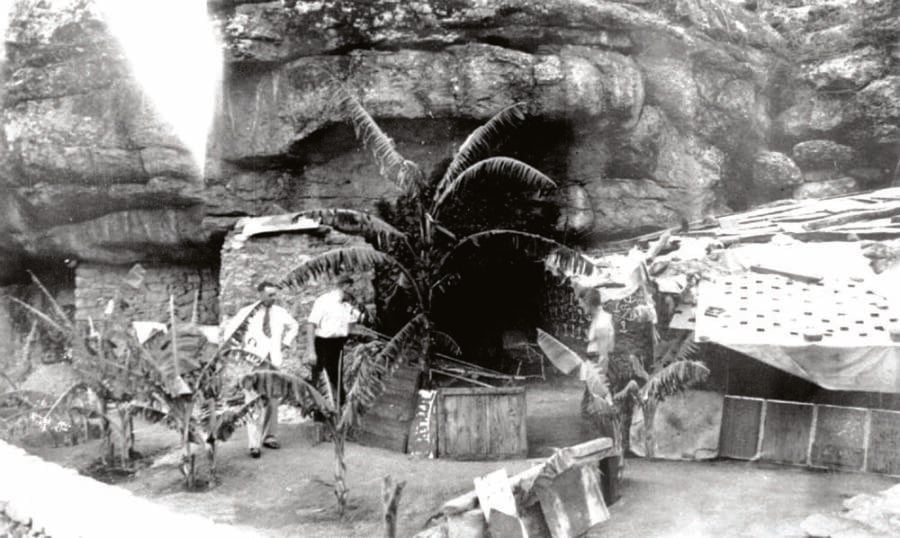Valerio Ricetti, The Hermit Of Griffith Who Built A Private ‘Utopia’ In A Cave

Griffith City CouncilValerio Ricetti, the “Hermit of Griffith.”
Penniless, heartbroken, battered, robbed, cheated, and jailed, Valerio Ricetti arrived on the outskirts of Griffith, New South Wales in 1929. Lonely and disillusioned with society, the Italian man had been another victim of the Depression. He was reaching the end of his rope.
It was a rainy evening, and he sought shelter in a rock overhang. The next morning, when the dark clouds above cleared, Ricetti realized that the overhang was surrounded by rich soil, abundant water, and vast fruit farms.
According to Australian Geographic, Ricetti had accumulated a variety of useful skills over the years. He’d worked as a stonemason’s apprentice, a miner, a fruit picker, a fencer, and a prospector. He realized that he could put these skills to use to craft himself an isolated home atop Scenic Hill.
Ricetti gathered discarded tools from the town dump, including a shovel and an ax head, and started constructing his hermit’s utopia. He built a fireplace within the deepest part of the overhang, trapped rabbits and hunted pigeons with a homemade catapult, and stole fruits and vegetables to supplement his diet.

Wikimedia CommonsValerio Ricetti’s “utopia.”
Ricetti worked primarily at night to avoid rousing suspicion, but after some time the people of Griffith began to notice that something was happening atop Scenic Hill. When they came to investigate, however, they found no one, as Ricetti would hide away in one of the secret alcoves he’d dug out.
Eventually, Ricetti expanded his home to include a garden where he grew figs, grapes, peaches, lettuce, sweet peas, and tomatoes. Inside, he decorated the walls of the caves with his own paintings.
This private life of seclusion lasted until 1935, when Ricetti fell off a boulder and broke his leg. He spent the next day calling for help, and someone ultimately found him and took him to a hospital. This small act of kindness led him to realize that perhaps not all people would treat him with disdain.
After the hospital visit, Ricetti became a somewhat notorious figure and began receiving guests at his hilltop home. News reached an old friend of Ricetti’s named Valentino Ceccato, who paid the hermit a visit and offered him a job picking peas on his farm.
Though he interacted with others more frequently due to his new job, Ricetti continued to live in his cave until 1940. Then, in the midst of World War II, he was accused of being an Italian spy and forced into a prisoner-of-war camp.
Five months later, perhaps due to the shocking change in living conditions, doctors diagnosed Ricetti as “deranged” and transferred him to a mental health institution. He was released six months later under one condition: that he live in town under proper accommodations.
His hermit’s life had come to an end. Forced back into civilization, Ricetti died 10 years later at the age of 53.





